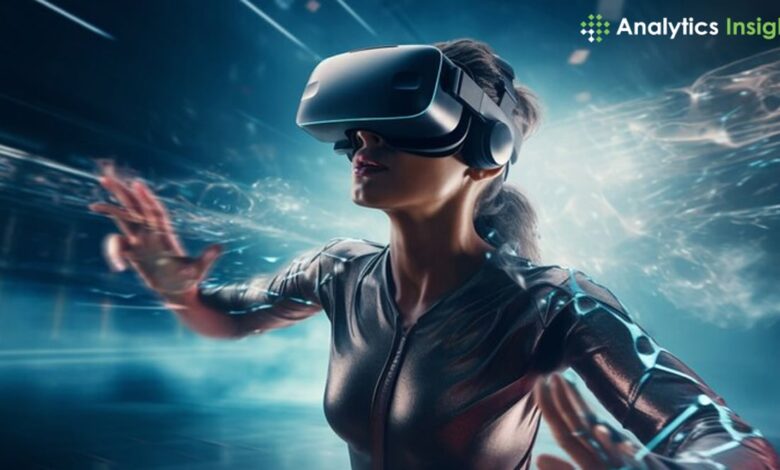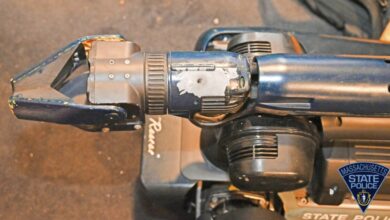A Virtual Journey into Robotics

The development of technology over the years has continued to improve and set new records in the sector with a focus on robotics and virtual reality (VR). When these two innovative areas are linked, one can find oneself in the Roboverse VR Exhibition, which provides captivating information on robotics. This new wave is a great chance to show the modern advances in robotic engineering while being limited to a virtual platform.
Understanding of the Concept for the Roboverse VR Exhibition
The Roboverse VR Exhibition is a unique event aimed at the presentation of current tendencies and new valuable developments in robotics. Being a virtual exhibition, the prospect of VR is harnessed as the means of presenting the exhibition in a highly engaging fashion. As for the shortcomings of physical exhibitions, this format does not restrict visitors geographically and offers an even more interesting and diverse interface of relations with robotic technologies.
A Tour of the Art Show
The narrative experience starts with an avatar guiding guests to the various areas of the Roboverse VR Exhibition and greeting them with an orientation tour. The exhibit is organized into distinct sections and areas, each of which focuses on a different facet of robotics.
1. The History of Robotics
The work starts with the background of robotics, where the progress of the technology and surroundings in which robotics was developed is portrayed. This section includes a timeline and exhibits to show great robots in history. To name a few, there is a mechanical knight invented by Leonardo da Vinci during the Renaissance period, industrial robots of the twentieth century, and breakthrough robots of the present time. For instance, the visitors can maneuver through replicas of robotic systems and inspect and study their structure and mechanics.
2. Industrial Robotics
The visitors proceed to industrial robotics, which presents how robots are used in manufacturing industries. This part includes virtual experiences in operating robotic arms for assembling products and operative automated assembly lines that show how different industries have benefited from integrating robots in their operations, thus increasing efficiency, precision, and minimizing risks. These robots can be controlled through various touchscreen interfaces, and therefore, with these exhibits, the visitors get to understand how these robots work, and more importantly, they get to be part of the modern manufacturing landscape.
3. Service and Domestic Robots
Among other showcases in the Future Life zone located in the middle of the fair, people can familiarize themselves with the ways new robots are getting into homes and offices. This section introduces robotic machines for various jobs, including cleaning, cooking, and even friendly companion robots. These demonstrations include virtual representations of how these robots engage in their setting and operate on their own. Another form of experience is live simulations where visitors can actively control certain service robots, allowing the audience to get closer to understanding the nature of robotics and learning how these machines are changing household work and personal assistance.
4. Medical and Healthcare Robotics
The division of Medical & Healthcare Robotics helps visitors understand the new potential offered by robots in the sphere of medicine. Surgical robots are displayed, and robots for post-surgical rehabilitation are included, in addition to robots that can assist with patient care. An example of an exhibit is the use of robots in surgeries; visitors are able to manipulate robotic systems, allowing them to conduct virtual surgeries and giving them a taste of the level of precision the surgeons have in those operations. It also discusses the moral implications of robots in healthcare as well as the prospects of their integration.
5. Exploration and Space Robotics
One of the most critical areas that can be showcased in the Roboverse VR Exhibition is the space exploration and robotics simulation area. For instance, there, one can see underwater robots, planetary rovers, and drones with an opportunity to be involved in a disaster operation. The only distinctive In the case of Sea. Orbis virtual environment recreates real-life scenarios so visitors can see how these robots function under difficult and hostile circumstances. Additional elements include the opportunity for visitors to operate an actual Mars rover or a deep-sea submarine, as well as audio-visual displays emphasizing the value of robotics in conserving our planet and exploring the cosmos.
Engaging Workshops and Exhibitions
The Roboverse VR Exhibition includes a range of interactive workshops and live demonstrations in addition to the themed zones. Robotics specialists lead these courses, which cover subjects like robot programming, integrating AI, and the direction robotics technology is taking. To better grasp the ideas and Robotic innovations on display in the exhibition, participants can get their hands dirty by making simple robotic models or programming virtual robots.
Robotics’ Future
The exhibition’s last portion is devoted to the future of robotics. This section explores how cutting-edge technologies like artificial intelligence, quantum computing, and nanotechnology could influence the next generation of robots through speculative designs and concepts. Visitors are recommended to think about the potential and social effects of these developments.
Conclusion:
The Roboverse VR Exhibition is a voyage into the future of robotics that is both informative and inspirational, going beyond simply showcasing robotic technology. Through the utilization of virtual reality technology, the exhibition offers a unique and immersive experience that enables visitors to interact with and comprehend the revolutionary possibilities of robotics.



